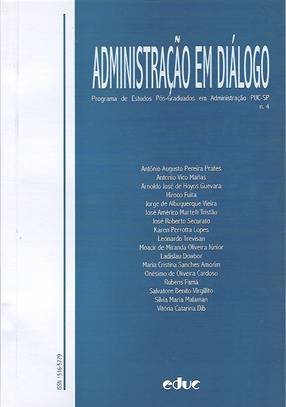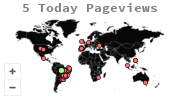Estratégias de marcas em processos de aquisição – um estudo de caso exploratório na indústria de alimentos
DOI:
https://doi.org/10.20946/rad.v4i1.878Abstract
O objetivo deste artigo é identificar como as empresas adquirentes que efetuam processos de aquisição de outras empresas do mesmo setor lidam com suas estratégias de marcas. Para isso foi realizada uma pesquisa piloto na forma de um estudo de caso em uma empresa multinacional que atua no setor de alimentos no Brasil. Para essa pesquisa foram realizados levantamentos de dados primários e secundários envolvendo a área de comunicação da empresa. Até os anos 1980, eram raros os processos de aquisições envolvendo grandes empresas. Estas práticas passaram a ser mais comuns no mercado, tendo as empresas que se adequar a esta nova dinâmica, pois agora atuam em um ambiente de competição mais intensa e com uma perspectiva global. No Brasil, as empresas de bem de consumo estão passando por grandes transformações devido à globalização da economia, implicando muitas vezes em estratégias de aquisição de empresas concorrentes. Para o caso estudado registrou-se 27 aquisições no período de 1989 a 2001. O propósito dessas aquisições foi se expandir e ganhar notoriedade no mercado brasileiro. As estratégias para a gestão das marcas abrangem a inclusão de marcas globais em algumas linhas de produtos e regiões do Brasil e a manutenção de marcas locais em outras linhas e outras regiões do país. Desta maneira, a empresa pesquisada atua no mercado por meio de duas formas: com sua marca guarda-chuva global e com suas marcas individuais, representadas por marcas regionais em cada parte do país. Este artigo busca apresentar uma justificativa estratégica para a adoção de práticas distintas de gestão de marcas em mercados e linhas distintos. Palavras-chaves: aquisição, marcas, estratégias. Abstract The objective of this article is to identify how merging companies that carry out acquisition of other companies of the same sector deal with their brand strategies. A case study research was carried out at a multinational company in the food sector industry in Brazil, involving primary and secondary data-collecting in the communication department. With the arise of the globalization, the consumer goods companies have been passing through many changes, which involves, many times, acquisitions of competitors. After the 80’s, those practices started to be more frequent due to a more intense competition. On the case study, 27 acquisitions were registered between 1989 and 2001. The goal of these acquisitions was to expand and increase share of mind. Strategies for brand management involved not only the inclusion of global brands in some categories and different Brazilians regions, but also maintained some local brands. This company acts in two different ways: with its global umbrella brand and with some individual brands represented thought its local brands in different parts of the country. The objective of this article is to present a reason of using different practices of brand management in different market and categories. Key words: acquisition, brands, strategies.Metrics
Downloads
Published
How to Cite
Issue
Section
License
Authors who publish in this journal agree to the following terms:
1. Authors retain the copyright and grant the journal the right of first publication, with the work licensed simultaneously under a Creative Commons Attribution License after publication, allowing the sharing of work with acknowledgment of the authorship of the work and initial publication in this journal.
2. Authors are authorized to take additional contracts separately, for non-exclusive distribution of the version of the work published in this journal (eg publish in institutional repository or as a book chapter), with acknowledgment of authorship and initial publication in this journal.
3. Authors are allowed and encouraged to publish and distribute their work online (eg in institutional repositories or on their personal page) at any point before or during the editorial process, as this can generate productive changes, as well as increase the and the citation of the published work (See The Effect of Free Access).








